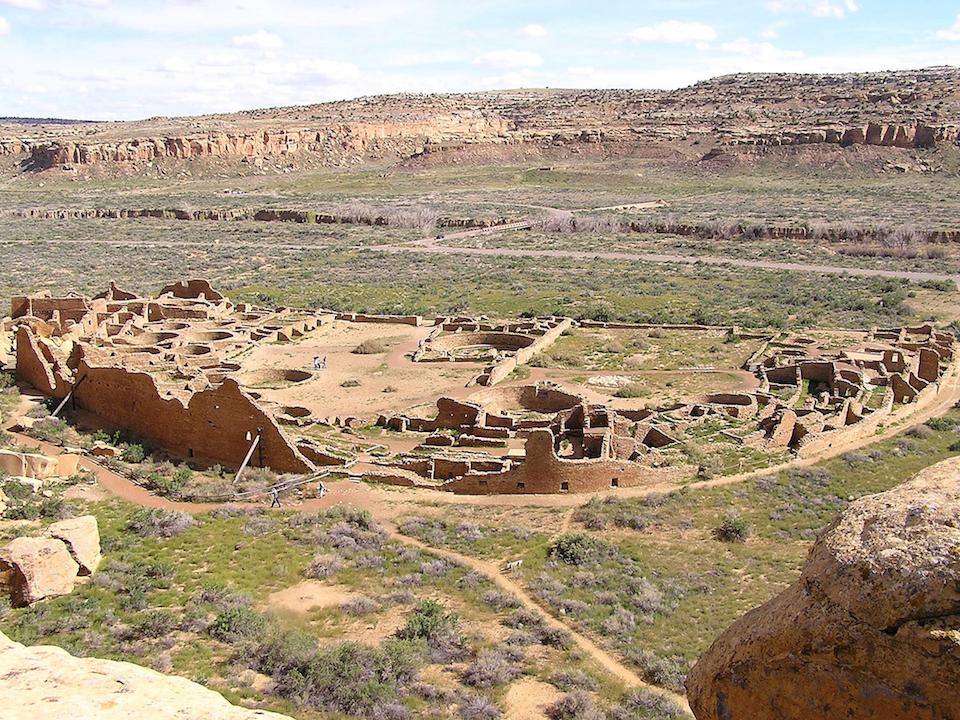
The U.S. House of Representatives on Wednesday passed measures to protect both Grand Canyon and Chaco Culture National Historical Park from energy development./Rebecca Latson file
Legislation to protect Grand Canyon National Park and Chaco Culture National Historical Park gained bipartisan support in passing through the House of Representatives, but whether the Senate will embrace the measures remains to be seen.
Bipartisanship has been lacking in Congress in recent years, and the need to pass a Continuing Resolution to keep the government running past November 21 and the building impeachment movement could slow work on anything but the most pressing measures in the weeks ahead.
On Wednesday, the House passed both the Grand Canyon Centennial Protection Act and the Chaco Cultural Heritage Area Protection Act.
The first measure makes permanent the current 20-year ban on uranium mining for one million acres of land neighboring Grand Canyon National Park, preserving tribal land and water within and around one of America’s most awe-inspiring landscapes. The second withdraws the lands within an approximate ten-mile Chaco Protection Zone around the park from further oil and gas development, ensuring protection of the park’s exceptional resources and sacred sites and the health of neighboring communities and tribes.
“We wouldn’t be here today without a truly historic level of dedication by people across the country, and I want to thank all the tribes, outdoor advocates, businesspeople, sportsmen and sportswomen, and everyday Americans who have poured their heart and soul into this fight,” U.S. Rep. Rául Grijalva, D-Arizona, said after the Grand Canyon act cleared the House. "Protecting the Grand Canyon is more important than offering the mining industry more corporate welfare, and the alliance behind this bill will stand together until we preserve this international icon for our grandchildren once and for all. Some issues are powerful and popular enough to blast right through the usual Senate deadlock, and protecting the Grand Canyon is one of them.”

Pueblo Bonito at Chaco Culture National Historical Park/NPS
At the National Parks Conservation Association, President and CEO Theresa Pierno said that, “Chaco Culture National Historical Park and Grand Canyon National Park are two of our nation’s most unique and beloved landscapes, meant to be protected for and enjoyed by all, not sacrificed for destructive mining and drilling for the gain of a few. For years, NPCA has worked alongside indigenous communities and other conservation groups to defend these iconic landscapes from short-sighted energy development that would destroy countless cultural treasures and devastate local economies. And today, members of the U.S. House of Representatives from both sides of the aisle came together and joined the fight to defend these public lands, and the cultural resources, wildlife and critical waterways they safeguard."
Also applauding the measure's passage was the National Wildlife Federation.
“Today’s votes are a tremendous victory for local communities, tribal nations and all Americans who value these cherished public lands,” said Tracy Stone-Manning, associate vice president of public lands at the National Wildlife Federation. “These bills will safeguard wildlife, drinking water, cultural treasures and popular recreation areas for generations to come. The Senate must now follow and quickly pass these responsible protections.”



Comments
Some good news for a change!
Why not just expoand the park to include the acreage removed from uranium mining? that was the point of the Grand Canyon Heritage monument proposal, which died in the last Congress, it would have included the acreage covered by the uranium ban, as well as about 700000 more acres. the current park is the result of the original monument created by Teddy Roosevelt in 1908, as well as a second Grand Canyon monument created by Hoover in 1933, and Marble Canyon which was creeated in 1969 by Johnson as a midnight monument. Congress folded the two monuments into the park in 1975, frankly I think Congress should do that again , and fold Grand Canyon Parashant, as well as the surrounding forest, into the park. that would add around 2.7 million acres, pushing the park to nearly 4 million acres in size. that would make the Grand Canyon the largest national park in the lower 48, there are 3 parks in Alaska (Denali, Gates of the Arctic and Wrangell St Elias) that cover 6 million+ acres
Yes! Nick is spot on! Given the amount of elevation change and the resulting possible variety of ecotones that could shelter species diversity in response to climate change, Nick's proposal is both timely and would be of extremely high environmental value.
Lets just include all of New Mexico! Arkzona too! It's ridiculous.
That sounds like a very good idea in general, although I'm not familiar with the "Arkzona" area. Where is that exactly?